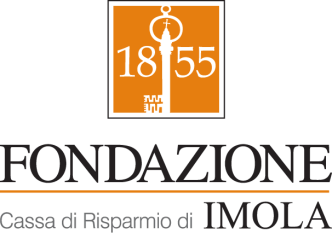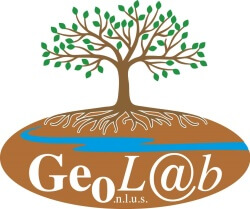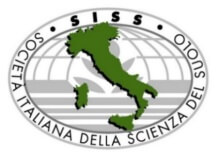Soil morphological and physico-chemical characteristics of Zygophyllum fabago L. populations in the Ili-Balkhash Region of Kazakhstan
DOI:
https://doi.org/10.6092/issn.2281-4485/22033Keywords:
Zygophyllum fabago L. , soil morphology, granulometric composition, heavy metals, salinity, KazakhstanAbstract
The present study investigates the morphological, physical, and chemical properties of soils in natural habitats of Zygophyllum fabago L. across three ecologically distinct populations in the Ile-Balkhash region of Kazakhstan. Soil samples were collected in August–September 2024 near Topar, Bakanas, and Miyaly villages, representing desert sandy and alluvial environments. Standard field profile descriptions and laboratory analyses were conducted following national GOST and classical pedological methods. Soils in all sites were characterized as weakly humus sandy or loamy sands with alkaline pH levels (8.4–8.9) and low organic carbon content (0.24–1.08%). Granulometric composition varied from sandy (Pop. 1) to loamy sand (Pop. 2 and 3), with moisture contents ranging from 3.9% to 7.6%. Mobile nutrients were present in low to moderate quantities, with potassium being relatively higher in Pop. 3. Heavy metals (Zn, Cu, Pb) were within permissible limits across all sites; however, cadmium (Cd) exceeded thresholds in total forms in Populations 2 and 3. Salt analysis revealed non-saline to moderately saline conditions, with increased salinity in surface horizons of Population 3. The results provide important baseline data for understanding the ecological amplitude of Z.fabago and assessing soil-plant interactions in arid ecosystems of Central Asia.
References
AIZEN V.B., AIZEN E.M., KUZMICHENOK V.A. (2007) Geo-informational simulation of possible changes in Central Asian water resources. Global and Planetary Change, 56(3–4): 341–358. https://doi.org/10.1016/j.gloplacha.2006.07.020
ALEXANDROVA L.N., NAIDENOVA O.A. (1986) Laboratory and Practical Work in Soil Science. Agropromizdat, Moscow.
ARINUSHKINA E.V. (1977) A Guide to Soil Chemical Analysis. MSU, Moscow.
BERNAUER T., SIEGFRIED T. (2012) Climate change and international water conflict in Central Asia. Journal of Peace Research, 49(1): 227–239. https://doi.org/10.1177/0022343311425843
BOBKOVA Y. (2008) Methods of Soil and Agrochemical Research. OGAU Press, Oryol.
BRECKLE S.W., WUCHERER W. (2012) The Aralkum, a man-made desert on the desiccated floor of the Aral Sea (Central Asia): General introduction and aims of the book. In: Breckle S.W., Wucherer W., Dimeyeva L., Ogar N. (Eds), Aralkum – a man-made desert. Ecological Studies, vol. 218. Springer, Berlin, Heidelberg, pp: 3–13. https://doi.org/10.1007/978-3-642-21117-1_1
BUDNIKOV T. (2001) Landscape and ecological assessment of the Ili-Balkhash region. Problemy Osvoeniya Pustyn [Problems of Desert Development], (2):19–26.
CEBALLOS A., MARTÍNEZ-FERNÁNDEZ J., SANTOS F., ALONSO P. (2002) Soil-water behaviour of sandy soils under semi-arid conditions in the Duero Basin (Spain). Journal of Arid Environments, 51(4):501–519. https://doi.org/10.1006/jare.2002.0973
CHEN X., BAI J., LI X., LUO G., LI J., LI B.L. (2013) Changes in land use/land cover and ecosystem services in Central Asia during 1990–2009. Current Opinion in Environmental Sustainability, 5(1):116–127. https://doi.org/10.1016/j.cosust.2012.12.005
DEMIN A.P. (2016) Problems with water use in countries of East, South and Central Asia. Geography and Natural Resources, 37(3):181–191. https://doi.org/10.1134/S187537281603001X
DE JESUS DUARTE S., HUBACH A., GLASER B. (2022) Soil water balance and wettability methods in soil treated with biochar and/or compost. Carbon Research, 1:31. https://doi.org/10.1007/s44246-022-00032-2
FAO - Food and Agriculture Organization of the United Nations (2006) Guidelines for soil description. 4th ed. FAO, Rome, 97 p. Available from: https://www.fao.org/3/a0541e/a0541e00.pdf
FLOWERS T.J., COLMER T.D. (2015) Salinity tolerance in halophytes. New Phytologist, 206(3):633–648. https://doi.org/10.1111/j.1469-8137.2008.02531.x
GEMEJIYEVA N.-G., SITPAYEVA G.-T., KARZHAUBEKOVA ZH.-ZH., CHOI S.-H., PAIK J.-H. (2022) Medicinal plants of Kazakhstan, vol. 1. Korea Research Institute of Bioscience and Biotechnology, Daejeon. ISBN: 978-89-6709-196-5
GRUDZINSKAYA L.M., GEMEJIYEVA N.G., NELINA N.V., KARZHAUBEKOVA ZH. (2014) Annotated list of medicinal plants of Kazakhstan. Vol. 20(1):26, 86. Almaty. ISBN: 978-601-7511-00-5
GLAZOVSKAYA M.A. (2012) Geochemical barriers in soils: typology, functional features, and ecological significance. Geochemistry of Landscapes and Soil Geography, pp: 26–44.
GUO L., XIA Z. (2014) Temperature and precipitation long-term trends and variations in the Ili-Balkhash Basin. Theoretical and Applied Climatology, 115:219–229. https://doi.org/10.1007/s00704-013-0883-3
GUO L., XIA Z., ZHOU H., HUANG F., YAN B. (2015) Hydrological changes of the Ili River in Kazakhstan and the possible causes. Journal of Hydrologic Engineering, 20(11):04014030. https://doi.org/10.1061/(ASCE)HE.1943-5584.0001214
HILLEL D. (2008) Soil water dynamics. Nature Education Knowledge, 1(4):15. https://www.nature.com/scitable/knowledge/library/soil-water-dynamics-103089121/
HUANG F., OCHOA C.G., JARVIS W.T. (2022) Evolution of landscape pattern and the association with ecosystem services in the Ili-Balkhash Basin. Environmental Monitoring and Assessment, 194:171. https://doi.org/10.1007/s10661-022-09836-6
IBM Corp. (2024) IBM SPSS Statistics for Windows, Version 28.0. IBM Corp., Armonk, NY.
KAMENSKY A.A., SAVELEVA K.V. (2000) Excess without brainwork is an obstacle. Khimia i Zhizn – XXI Century, (2):16–18.
KACHINSKY N.A. (1954) Soil, Its Properties and Life. USSR Academy of Sciences, Moscow, 238 p.
KARTHE D. (2018) Environmental changes in Central and East Asian drylands and their effects on major river-lake systems. Quaternary International, 475:91–100. https://doi.org/10.1016/j.quaint.2017.01.041
KANAEVA R. (2004) The Ili-Balkhash basin: problems and prospects for sustainable development. In: ECWATECH-2004 Conference Proceedings, Part 1, pp: 39–40.
KHASANOV S., KULMATOV R., LI F., VAN AMSTEL A., BARTHOLOMEUS H., ASLANOV I., SULTONOV K., KHOLOV N., LIU H., CHEN G. (2023) Impact assessment of soil salinity on crop production in Uzbekistan and its global significance. Agriculture, Ecosystems & Environment, 342:108262. https://doi.org/10.1016/j.agee.2022.108262
KOROLEVA E.G., DIKAREVA T.V., DIKAREV V.A. (2019) Assessment of natural hazards in the Ile-Balkhash Nature Reserve (Kazakhstan). Arid Ecosystems, 9:264–272. https://doi.org/10.1134/S2079096119040048
KOROLYUK T.V. (2012) Soil interpretation of space images in CPC systems. In: Digital Soil Cartography: Theoretical and Experimental Studies. Soil Institute named after V.V. Dokuchaev, Moscow, pp: 124–140.
KOVDA V.A., ROZANOV B.G. (2008) Part 1. Soil and Soil Formation. Vysshaya Shkola, Moscow, 400 p.
LIOUBIMTSEVA E., HENEBRY G.M. (2009) Climate and environmental change in arid Central Asia: Impacts, vulnerability, and adaptations. Journal of Arid Environments, 73(11):963–977. https://doi.org/10.1016/j.jaridenv.2009.04.022
MINISTRY OF ENVIRONMENTAL PROTECTION OF THE REPUBLIC OF KAZAKHSTAN. (2002) Current ecological condition of the Lake Balkhash basin. Ministry of Environmental Protection of the RK, Almaty, 138 p.
MUKHITDINOV A., NURTAZIN S., ALIMOVA S., ABLAIKHANOVA N., YESSIMSIITOVA Z., SALMURZAULY R., MARGULAN I., MIRASBEK Y. (2020) The transformation of ecosystems of the Ili River delta (Kazakhstan) under the flow regulation and climate change. Applied Ecology and Environmental Research, 18(2):2483–2498. https://doi.org/10.15666/aeer/1802_24832498
MUNNS R., TESTER M. (2008) Mechanisms of salinity tolerance. Annual Review of Plant Biology, 59:651–681. https://doi.org/10.1146/annurev.arplant.59.032607.092911
MYRZAKHMETOV A., DOSTAY Z., ALIMKULOV S., ET AL. (2022) Level regime of Balkhash Lake as the indicator of the state of the environmental ecosystems of the region. Paddy and Water Environment, 20:315–323. https://doi.org/10.1007/s10333-022-00890-x
PUEPPKE S.G., ZHANG Q., NURTAZIN S.T. (2018) Irrigation in the Ili River Basin of Central Asia: From ditches to dams and diversion. Water, 10(11):1650. https://doi.org/10.3390/w10111650
ROZANOV B.G. (2004) Soil Morphology. Academic Project, Moscow, 432 p.
ROY R.N., FINCK A., BLAIR G.J., TANDON H.L.S. (2006) Plant nutrition for food security: A guide for integrated nutrient management. Food and Agriculture Organization of the United Nations, Rome. Available from: https://www.fao.org/3/a0250e/a0250e00.htm
STARODUBTSEV V., TERENTYEV A. (2024) Environmental drama in the Ili River delta, Kazakhstan. Presented at: Social Adaptation of the Individual in the Conditions of Social Transformations. Geography Section; August 2024; Hamburg, Germany. https://doi.org/10.46299/ISG.2024.1.32
STAVI I., THEVS N., PRIORI S. (2021) Soil salinity and sodicity in drylands: A review of causes, effects, monitoring, and restoration measures. Frontiers in Environmental Science, 9:712831. https://doi.org/10.3389/fenvs.2021.712831
SUN C., FENG D., YU C., SUN J., HAN X., ZHANG M., ZHANG P., HAN H., MAO W., SHEN X. (2022) The dynamics characteristics of soil water infiltration and capillary rise for saline–sodic soil mixed with sediment. Water, 14(3):481. https://doi.org/10.3390/w14030481
TALIPOVA E., SHRESTHA S., ALIMKULOV S., ET AL. (2021) Influence of climate change and anthropogenic factors on the Ile River basin streamflow, Kazakhstan. Arabian Journal of Geosciences, 14:1756. https://doi.org/10.1007/s12517-021-08152-6
UNGER-SHAYESTEH K., VOROGUSHYN S., FARINOTTI D., GAFUROV A., DUETHMANN D., MANDYCHEV A., MERZ B. (2013) What do we know about past changes in the water cycle of Central Asian headwaters? A review. Global and Planetary Change, 110(Part A):4–25. https://doi.org/10.1016/j.gloplacha.2013.02.004
USDA - United States Department of Agriculture (1993) Soil texture classification. In: Soil Survey Manual. USDA Natural Resources Conservation Service, Washington, DC. Chapter 3. https://www.nrcs.usda.gov/resources/guides-and-instructions/soil-survey-manual
USDA - United States Department of Agriculture Natural Resources Conservation Service. (1998) Soil quality indicators: pH. USDA NRCS, Washington, DC. https://www.nrcs.usda.gov/sites/default/files/2022-10/soil_ph.pdf
WAKSMAN S.A. (1937) Humus: Origin, Chemical Composition and its Significance in Nature. Selkhozgiz, Moscow, 470 p.
WANKMÜLLER F.J.P., DELVAL L., LEHMANN P., ET AL. (2024) Global influence of soil texture on ecosystem water limitation. Nature, 635:631–638. https://doi.org/10.1038/s41586-024-08089-2
WANG G., GOU Q., HAO Y., ZHAO H., ZHANG X. (2020) Dynamics of soil water content across different landscapes in a typical desert-oasis ecotone. Frontiers in Environmental Science, 8:577406. https://doi.org/10.3389/fenvs.2020.577406
YU Y., PI Y., YU X., ET AL. (2019) Climate change, water resources and sustainable development in the arid and semi-arid lands of Central Asia in the past 30 years. Journal of Arid Land, 11:1–14. https://doi.org/10.1007/s40333-018-0073-3
Downloads
Published
How to Cite
Issue
Section
License
Copyright (c) 2025 Asem Mamurova, Gulzat Kairanova, Yelena Zaparina, Aitzhan Mengtay, Aliya Kudaibergenova, Aigul Yedilova, Orynbasar Tleuberlina, Shynar Tustubayeva, Bedel Kaliyev

This work is licensed under a Creative Commons Attribution 4.0 International License.









